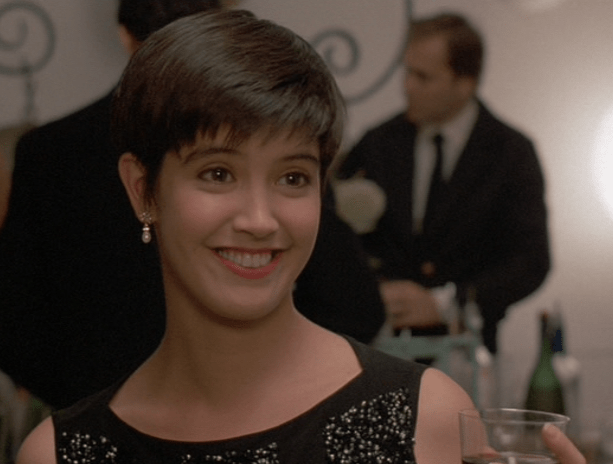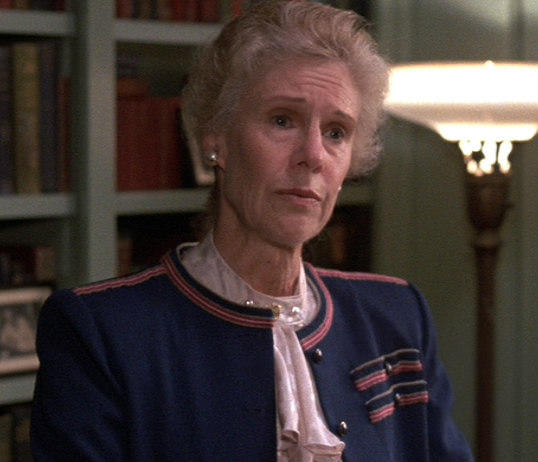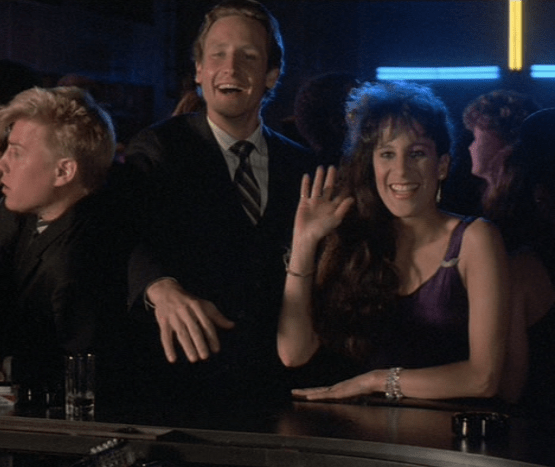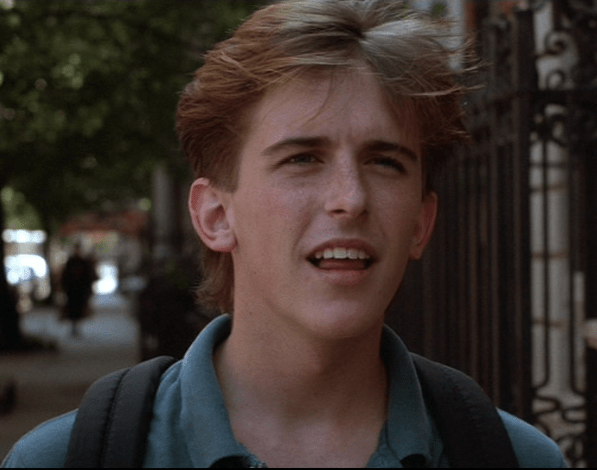Bright Lights, Big City (1988)
Starring Michael J. Fox, Kiefer Sutherland, Phoebe Cates, Swoosie Kurtz, Frances Sternhagen, Tracy Pollan, John Houseman, Charlie Schlatter, Dianne Wiest, William Hickey, Jason Robards, Sam Robards and David Hyde Pierce. Directed by James Bridges. From United Artists.

Jamie Conway (Fox) is depressed. His model wife, Amanda (Cates), has left him and gone to Paris and so he’s talking to himself and staring at a bald, female bartender at a night club in New York City in the very early hours of the morning. High on cocaine and vodka, he stumbles home and crashes only to be wakened by a call from a co-worker. Jamie is late for work.

Jamie is an editor at Gotham magazine and works in an office with Megan (Kurtz) and others. They all work for school mistress-type Clara Tillinghast (Sternhagen) who reports to the venerable Mr. Vogel (Houseman). Jamie’s on thin ice at Gotham and the “French piece” he’s working on is due by the end of the day. Jamie can’t focus and has to take a break to do a couple of lines. He hands in a hack job and leaves for the night.
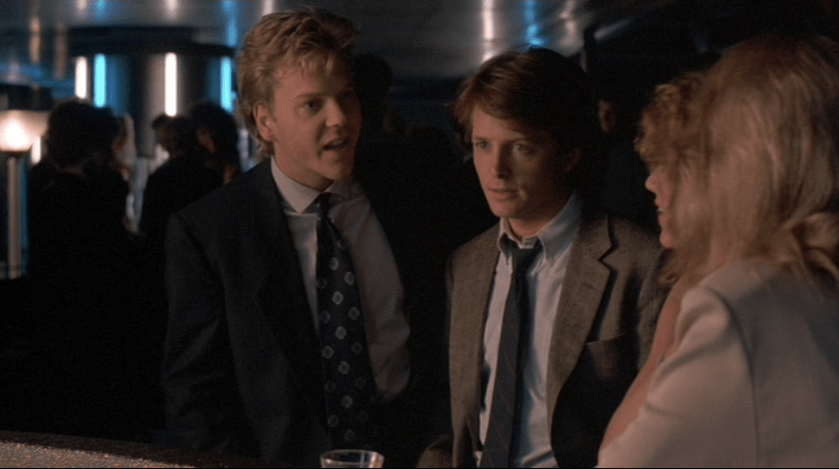
Jamie’s best friend, glib and hip Tad Allagash (Sutherland), takes Jamie out for drinks, drugs and dames in an effort to get Jamie’s mind off Amanda. Tad lies to girls about Amanda’s “death” but Jamie tells the truth. The next day at work is a washout particularly when Jamie has a long, liquid lunch with legendary editor Mr. Hardy (Jason Robards) and then staggers out into the street. In a store window, Jamie sees a mannequin that looks like Amanda and he knows she is back in town.
Jamie does Tad a favour by taking out Tad’s cousin. Turns out Vicky (Pollan) is a hottie and Jamie is smitten. Jamie gets canned the next day though when his work is found to be riddled with errors. He slumps on a bench in the park and buys some coke and a ferret from some old guy (Hickey). In a hilarious attempt to “get back at” Clara for firing him, Jamie takes Tad and the two sneak into Clara’s office late at night to let Fred the Ferret loose. They are interrupted by a drunken Mr. Hardy and they lam it.
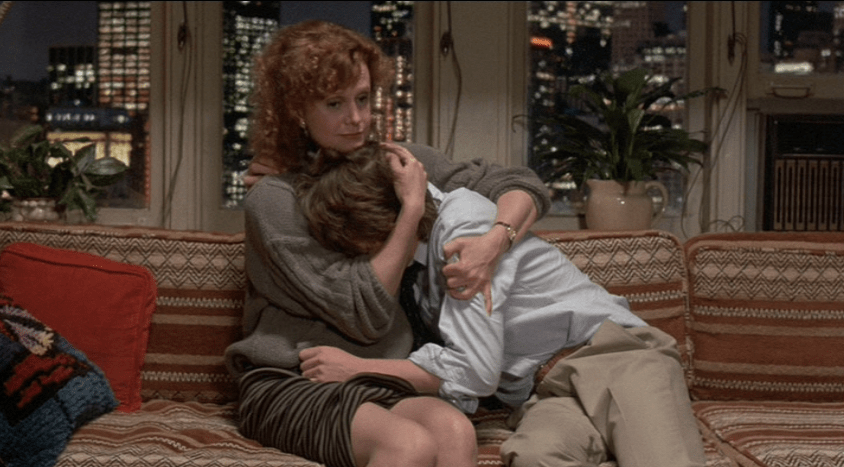
Jamie goes to the Oscar de la Renta show that Amanda is appearing in. He gets belligerent, shouting at her for answers, and gets ejected. Megan wants to help and has Jamie over for dinner where he tells her the story of he and Amanda. He is starting to spin out of control. He makes an awkward pass at Megan who gently rebuffs him and Jamie leaves, embarrassed.
Jamie Conway is spiralling. His younger brother, Michael (Schlatter), has been trying to get in touch with Jamie and Jamie has been avoiding him. When Michael shows up at Jamie’s apartment, Jamie is hostile but gradually cools as he recalls the heartbreak of his mother’s (Wiest) recent death from cancer. Beginning to realize it is his mother’s death he cannot cope with, Jamie confronts Amanda at a party, breaks down and calls Vicky. Leaving the party and walking out into the New York City dawn, Jamie finally comes to a turning point.
I know this is almost a “new” movie compared to what we normally discuss here at Your Home for Vintage Leisure. But, as I will tell anyone who asks, sometimes when I refer to “the past”, I will simply mean my past and this film looms large in my memory and was always a favourite of mine.
And I’ve been a Michael J. Fox fan since almost my earliest memories of watching television. I rarely missed Family Ties and wanted to be Alex P. Keaton and when Mike made Back to the Future in 1988, well, I wanted to be Marty McFly, too. All this was supported by the fact that Fox is a fellow Canadian, having been born in Edmonton, Alberta in 1961. Fox took a break from Family Ties to make Back to the Future and became a superstar. He was on another break from his TV show when he made our film and, in fact, his status as an actor caused countless troubles with crowd control when he was shooting on location in Manhattan.
So many people that we talk about on these pages struggle to break free from the niche where audiences expect to find them. With this film, Fox was trying something different from Keaton and McFly. In fact, you have to give Michael J. points; after the hit teen films Back to the Future and Teen Wolf – both from 1985 – Fox spent three of the next four films “trying something different”. Light of Day (1987) was a rock & roll movie Fox (who could play the guitar) made with Joan Jett and that featured a title track newly written by Bruce Springsteen. After Bright Lights, Fox made Casualties of War (1989), a Vietnam war film with Sean Penn that was directed by Brian De Palma. When these departures failed to connect with audiences, Fox returned to work on the second and third Back to the Future films and never again stepped out of the box. Audiences particularly were put off by Bright Lights, Big City‘s depiction of Fox as a drug user. But MJF is good in this film. I will say that there are nuances and mannerisms that suggest drunkenness or a drug high and few actors can nail “playing drunk”. Clean-living Michael J. doesn’t always pull this off perfectly.
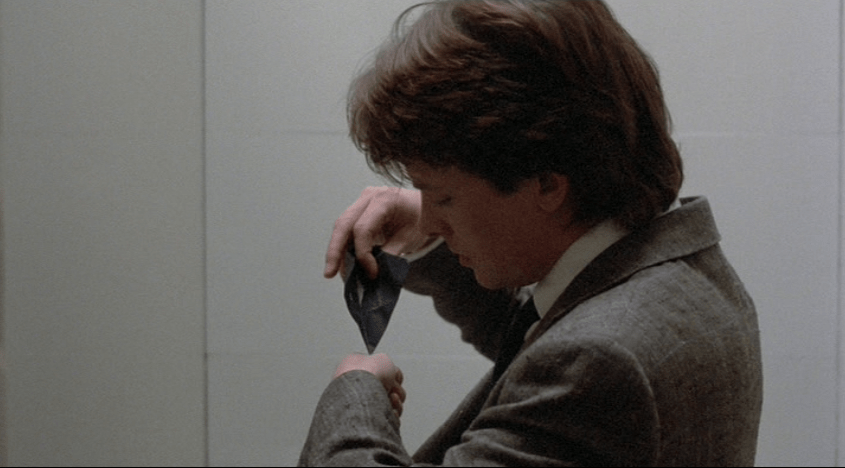
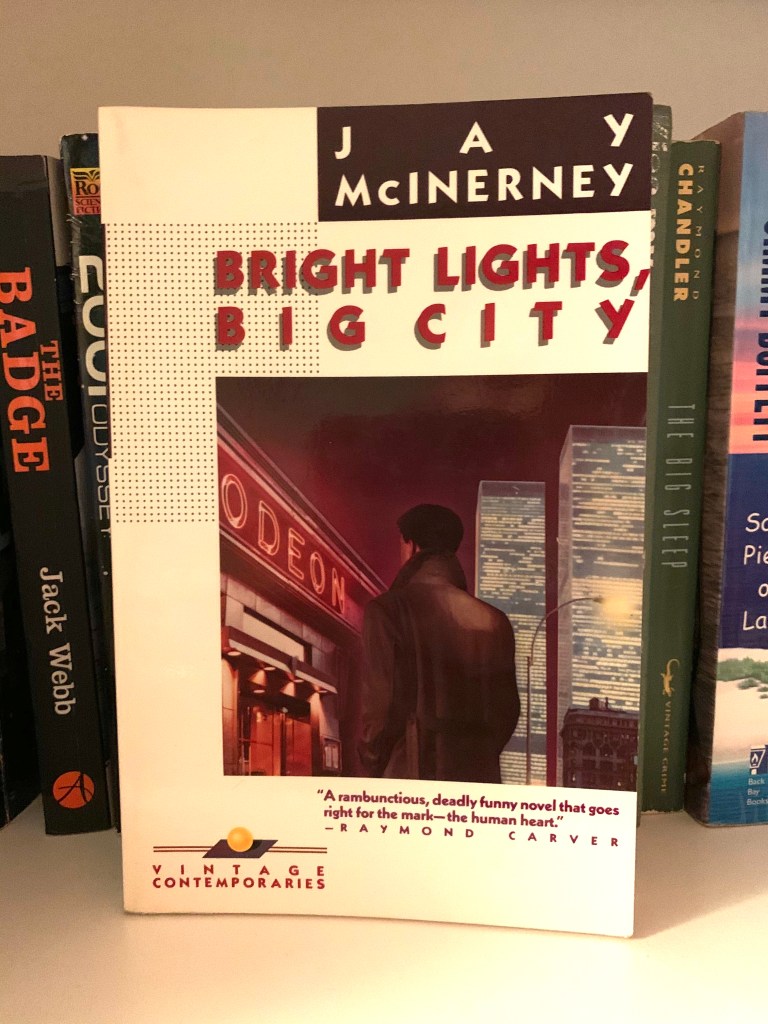
The source novel for this film was written by Jay McInerney, part of a “literary Brat Pack” of young authors in the late 1980’s who wrote novels about life in the excessively fast lane. McInerney wrote the screenplay for our film as well and Fox’s narration reflects the fascinating writing style of the book that I personally love. Bright Lights, Big City is written in the “second person”; “At Fifth Avenue you cross and walk up to Saks. You stop in front of a window…” I’ve often called it “current tense”; it makes the action more immediate and makes it feel like you really are reading the story as it is happening right there in your hands. It’s exciting. The film is directed by the late James Bridges who had directed Colossus: The Forbin Project (1970), The Paper Chase (1973), The China Syndrome (1979) and Urban Cowboy (1980). Bright Lights was the last film he directed before his death in 1993.
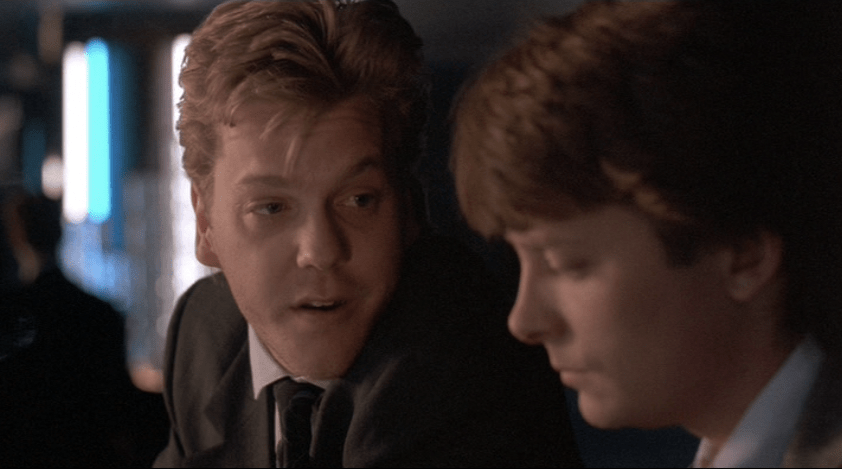
Michael J. suggested to producers the casting of his mate, fellow Canadian Kiefer Sutherland. The son of Canadian actor Donald Sutherland, Kiefer William Frederick George Rufus Sutherland was born while his parents were working in Paddington, London, UK but raised in Toronto. Kiefer had been in Stand By Me (1986) and The Lost Boys (1987) and he appeared in our film just before his high-profile turn as ‘Doc’ Scurlock in Young Guns in the same year. In 1988 his star was on the rise and he would go on to make Flatliners (1990), A Few Good Men (1992), A Time to Kill (1996) and from 2001 until 2010, he starred in the successful TV series 24.
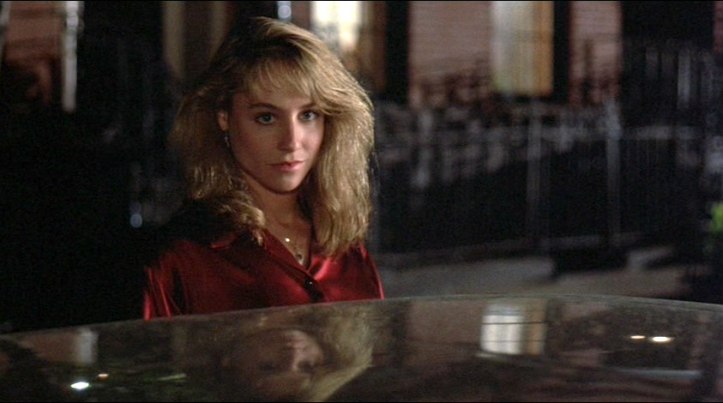
Bright Lights, Big City is loaded with great female actresses. The casting of Phoebe Cates as Jamie’s model wife is bang on. Phoebe took notable turns in Fast Times at Ridgemont High (1982) and Gremlins (1984) before quitting acting to raise her family with husband Kevin Kline. In a nice touch, the two have only wed once and are still together, having married in 1989. Swoosie Kurtz has had a successful, Emmy-winning television career. That is her real first name; her father named her after the bomber he flew in World War 2. Venerable stage and screen actress Frances Sternhagen has countless credits to her name and is best remembered today for her work on Broadway. Tracy Pollan had played Alex P. Keaton’s girlfriend on Family Ties. I distinctly remember being captivated as a young teen by their story arc. Fox and Pollan started a relationship but not until they worked together on Bright Lights. Like Phoebe Cates, Pollan basically left acting to focus on her family when Fox and her married in 1988. They are still together and have four children. The Michael Foxs and the Kevin Klines, actually, are two pleasant stories of seeming marital bliss in Hollywood. Dianne Wiest is one of the most celebrated and respected actresses in the business. Coming into her appearance in our film, Wiest had already won an Oscar for Hannah and Her Sisters (1986) and would win another for Bullets Over Broadway (1994) – both Woody Allen films. You can also see Wiest in Footloose (1984), The Lost Boys (with Sutherland), Edward Scissorhands (1990) and Clint Eastwood’s The Mule (2018).
What can be said of John Houseman? This legendary actor and producer of stage, screen and television did it all in a career that spanned almost 60 years. He had previously been directed by James Bridges in The Paper Chase for which Houseman won an Academy Award for Best Supporting Actor. Bright Lights catches him at the end of his career. He actually appears in four films released in 1988 but two came out after his death from spinal cancer on Halloween in 1988. He was 86. Bright Lights, Big City was the first film for Charlie Schlatter who would go on to a minor career in live-action films before finding some joy on television. He played the title role in TV’s take on Ferris Bueller which was cancelled during its first season before landing a lasting gig on Diagnosis: Murder. For the last 30 years, Schlatter has enjoyed extensive voice-acting work in countless animated shows. The late William Hickey makes a memorable appearance as a coke-and-exotic-animal dealer. Another legitimate stage actor among this cast, Hickey is best remembered for his Academy Award-nominated turn in Prizzi’s Honor (1995) and as Uncle Lewis in the perennial favourite National Lampoon’s Christmas Vacation (1988). I remember him playing Al Pacino’s dad in Sea of Love (1989).
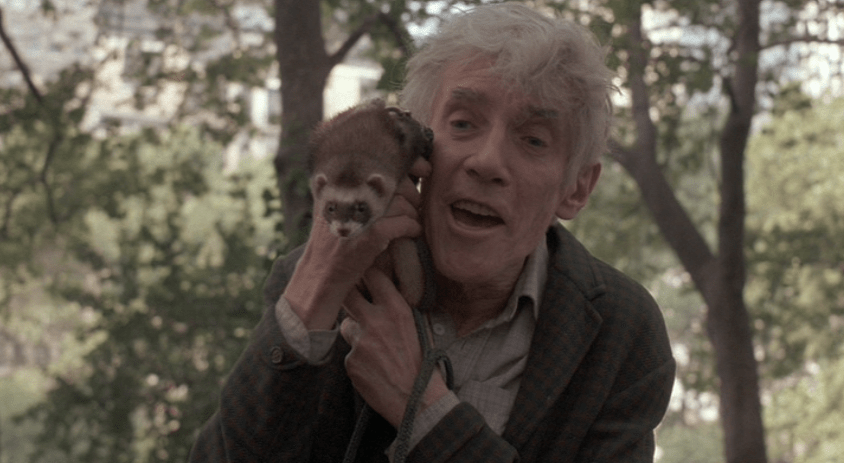
Two-time Oscar winner Jason Robards makes a hilarious and uncredited appearance as an old school editor at the magazine, the “Faulkner friend who falls afoul of furry fiend”. It’s hard to play drunk well and Robards nails it; apparently he had much practice in real life. One of Robards’ sons with Lauren Bacall, Sam Robards, also appears in our film in a small role, two lines, I think. Sam is also in one of my favourite films, Beautiful Girls (1996). Actress and model Kelly Lynch had made two minor films before appearing briefly in Bright Lights. She was about to break through and appeared notably later in 1988 in Cocktail. She later appeared in three consecutive excellent films in 1989-90; Road House with my man, Patrick Swayze, Drugstore Cowboy with my man, Matt Dillon and the remake of Desperate Hours with my man, Mickey Rourke. This is also the first film for David Hyde Pierce, later of TV’s Frasier. Pierce plays the bartender at the fashion show and has one line; “Bar’s closed”. The cast of Bright Lights, Big City is filled with notable faces and I just love that in a movie.
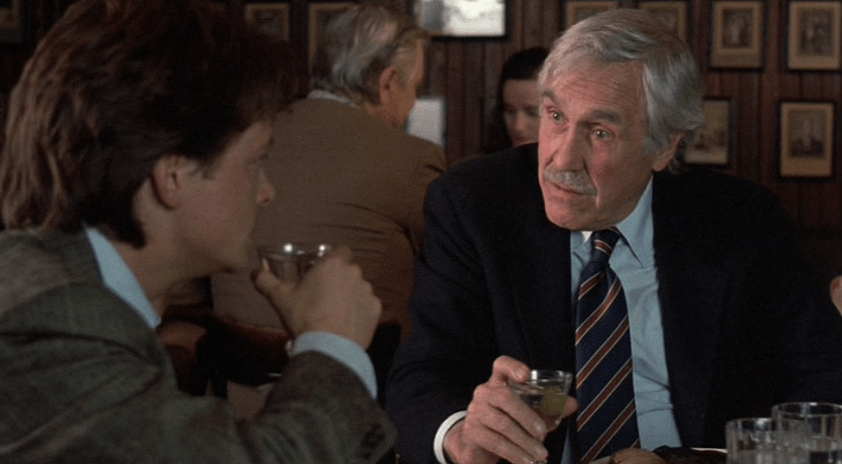
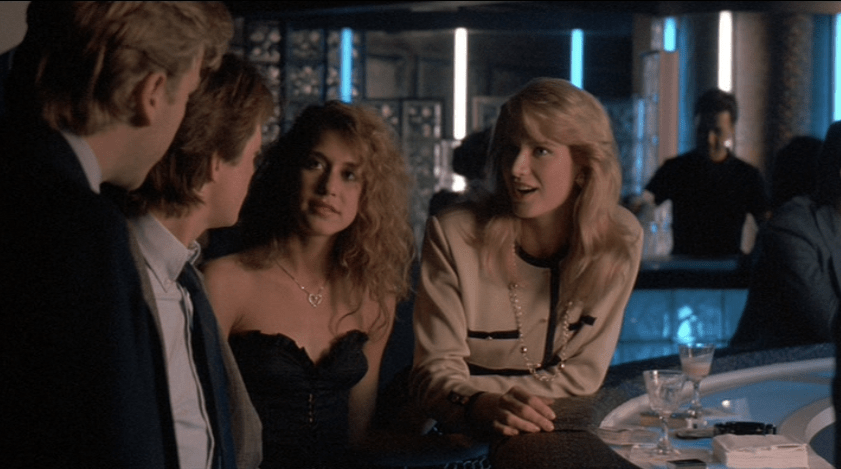
Right from the outset, the flashy opening titles and the music playing in the trendy night club combine to set the stage for a stylish look at the late 1980’s. McInerney and his contemporary, Bret Easton Ellis and the film of his 1985 novel Less Than Zero depict a hedonistic time when nothing exceeded like excess. Throughout Bright Lights, Big City we see just that; flashy night club lights and the metropolis of Manhattan. We see young, hip people dressed sharply and staying out until all hours – even on weeknights!
I used to own the soundtrack on cassette. It’s a good one but while the album sticks with the trendy dance music from the time, the film uses songs with more depth for atmosphere. Prince’s excellent “Good Love” kicks off the album and a favourite of my generation, “True Faith” by New Order is also present. More dance music sounds are provided by the likes of MARRS, Konk, Depeche Mode and Jennifer Hall. I was so pleased when I first saw the film that they made use of Jimmy Reed’s song “Bright Lights, Big City”. Even back in the ’80’s I loved Jimmy and he is still my favourite blues man. And his lyric is apropos; “Bright lights, big city, went to my baby’s head…” Donald Fagen of Steely Dan is on hand to help with the score and he provides a solid version of the title track heard near the end of the film and his “Century’s End” sounds to me to be what I’d consider a “typical” closing credits song for a film from this era. There’s more Canadian content in the film with the use of two songs from legendary Canadian jazz pianist Oscar Peterson. And I have to mention Gustav Mahler. I explored him after one of the 100 times I watched St. Elmo’s Fire in which Alec and Leslie argue about who gets the Mahler records. A song of Mahler’s is used in this film AND Prince namechecks him in “Good Love”; “Gustav Mahler #3 is jamming on the box…”
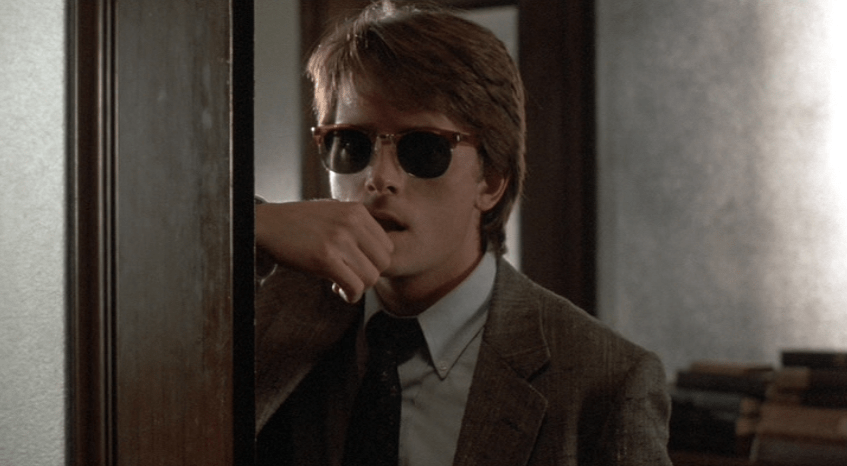
From the outset, Jamie Conway is in a bad way. In the opening narration, we are told that he is separated from his wife and he is obviously out drinking and drugging and generally not coping very well. Through a well acted and choreographed scene, Jamie confides to Megan the story of how he met and married Amanda. They were living in Kansas and both had dreams; Jamie wanted to be a novelist and Amanda wanted to be a model. Both aspirations called for moves to the big city. Initially, Jamie was in the driver’s seat. He was on the cusp, he felt, of realizing his dream and had more on the ball seemingly than Amanda, who was inferior to Jamie intellectually. But as Jamie’s novel failed to take flight, Amanda is suddenly discovered and becomes a successful model. It’s the old A Star is Born scenario wherein the wife is in demand and the husband attempts to cope with his failure with substance abuse.
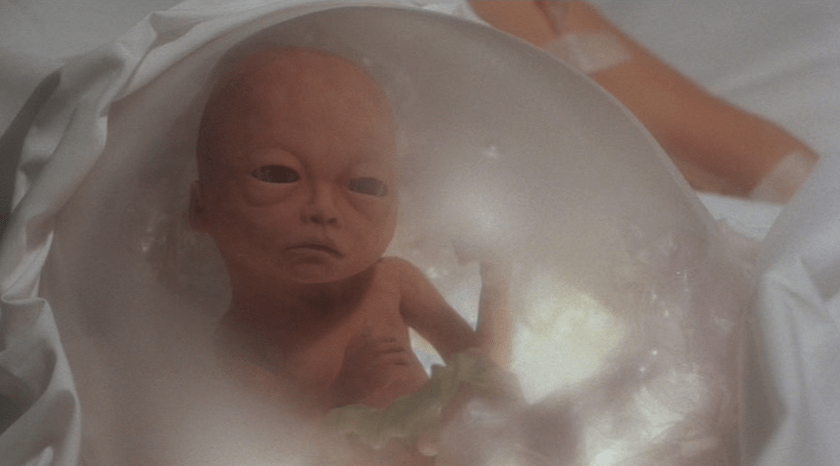
We are gradually shown, however, that Jamie’s real problem is the death of his mother a year previous from cancer. An interesting and unique plot point of the movie has to do with Jamie’s obsession with the “Coma Baby”. The New York Post is depicted as a sensational gossip-type rag and throughout the movie Jamie is checking the paper for updates on the pregnant lady who’s in a coma and cannot deliver her baby. See, the mother is in fragile health and the Coma Baby cannot yet be born, cannot live and this is presented as a metaphor for Jamie’s inability to conduct a healthy, prosperous life due to the fact that he has lost his mother. There’s an interesting dream sequence depicting Jamie talking to an animatronic “L’Enfant Coma” and asking it to come out. It refuses.
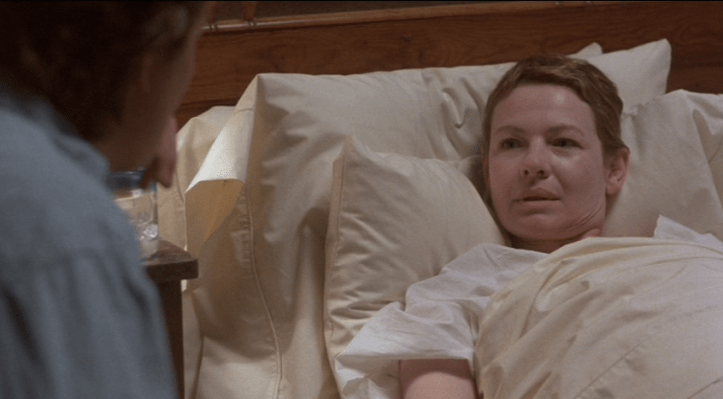
Dianne Wiest is compelling as the mother and we see her in a flashback suffering in her death bed while Jamie holds her hand. The viewer is left to wonder if perhaps Jamie didn’t rush in to marriage to please his mom; although everyone in his life admits they never liked Amanda. The most significant element of the flashback comes when the mother is writhing in pain. Denying Jamie’s offer to administer morphine, the mother instead marvels at a memory – she says that this pain reminds her of the pain she felt when giving birth to Jamie. He looks stricken and says “That bad?” She goes on to talk about how he was a “terrible baby” and how he had to be driven around in the car for hours before he’d fall asleep. All this leaves Jamie feeling guilty. The beginning of his life brought pain to his mother, the same pain she feels now as she dies.
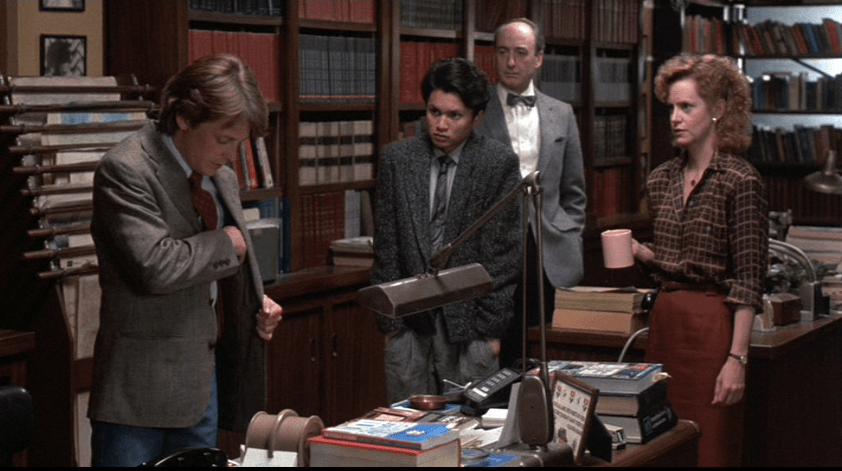
All of Jamie’s friends and co-workers seem to sense his feeling of aloneness. Tad is always helping him socially although his help is sometimes misguided as it seems Tad’s first instinct is to lie; he tells people Amanda died in a hail of bullets in Paris and from leukemia. Megan desperately wants to help Jamie, going so far as to hold him to her breast while she coos “poor little baby” and indeed his two other male co-workers are seen watching him carefully as he struggles to complete his work. Sternhagen is excellent in the scene depicting Jamie being called on the carpet for shoddy work. Her face reflects her heartbreak as she is forced to reprimand him. Meeting Vicky is a turning point for Jamie although that may not be apparent to him or the viewer at the time. When Jamie retreats to the bathroom at the party at which he confronts Amanda, there’s a great shot showing him discovering a telephone in the room. I just love the idea that – here at his very nadir – he thinks to call Vicky, although it’s the middle of the night. I also love the fact that he prematurely dumps his neuroses on this girl he’s just met. He lays himself bare to her as opposed to the strong front he’s been putting up. And that’s a turning point for Jamie.
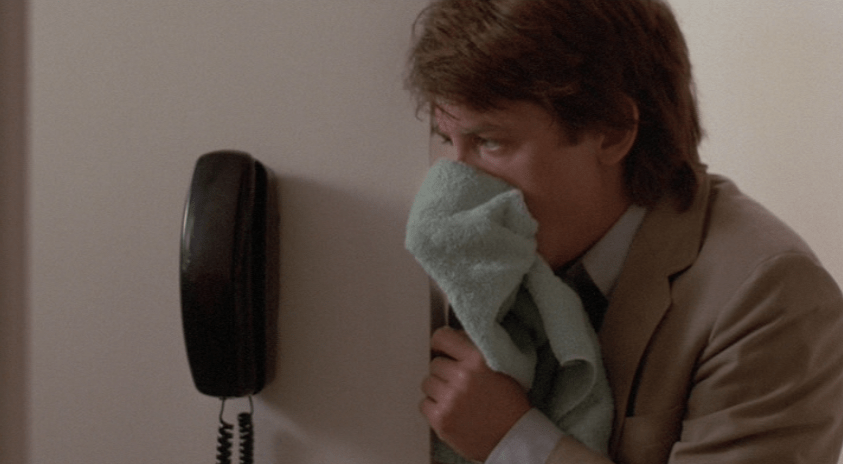
Previously, Jamie had tried to numb his pain and run from facing his mother’s death. In fact, he even runs away when he sees his brother, wanting to flee his family instead of dealing with them. But after he talks with Vicky and closes the book on Amanda with an accepting but melancholy look at her, he’s able to pivot and begins to take steps to get control of his life. Stumbling out into a Manhattan dawn that reflects his own awakening, he sees an early morning bread truck being loaded for delivery. As he recalls his mother making her own bread in the past, he trades his sunglasses for a small loaf. He trades a symbol of hipness and concealment for something pure. Bread. It’s his way of keeping his mother in his life in a healthy way. The last shot of the film is a New York Post headline: “COMA BABY LIVES!”
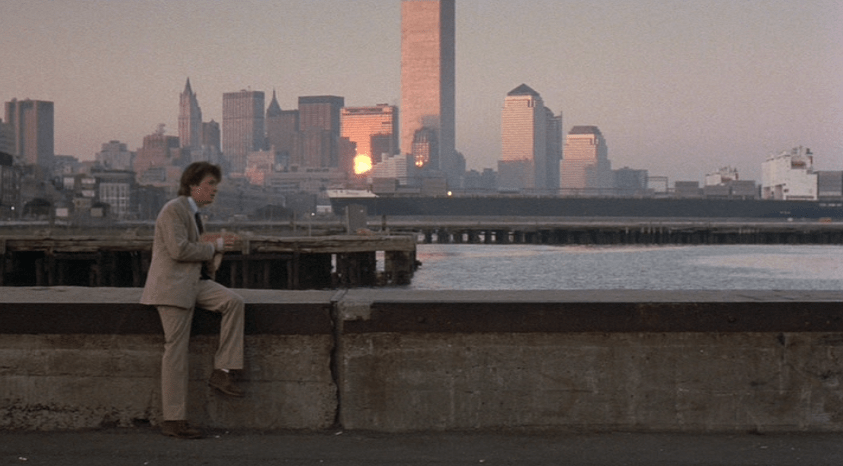
As I’ve said, I loved Michael J. Fox in the 1980’s and was eager to see this film when it came out. When I did, it really resonated with me. Of all the movies I love, few had me wanting to be the guy in the movie more. I wanted to be Jamie Conway; perhaps not with the substance abuse but I’ll admit that something about the excessive living did appeal to me. I wanted to be a writer and after I saw this film I began to think that an editor’s job like Jamie’s would be a perfect place to start. I thought I could easily work in the Office of Factual Verification like Jamie did which would support me while I worked on my novel and submitted my short stories. In terms of writing dreams, our lives were actually similar; I even owned the same type of big, bulky electric typewriter Jamie uses. Truth be told, as I grew older, Bright Lights, Big City remained in my head and in my spirit as the ideal template of the daydream version of my life. Actually, I was upset that McInerney had written this story, that it was already out there because it is the epitome of the type of tale I wanted to tell as a young writer. This is an instance of a film penetrating my being and becoming a cherished friend. It’s that wonderful, deep feeling that can come with some of the movies we love so much.
